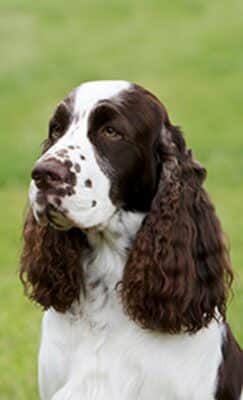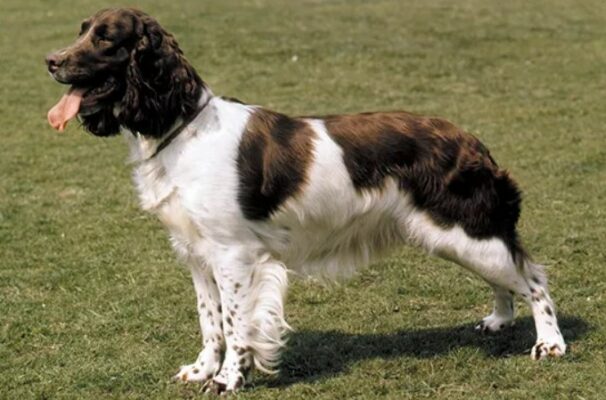English Springer Spaniel
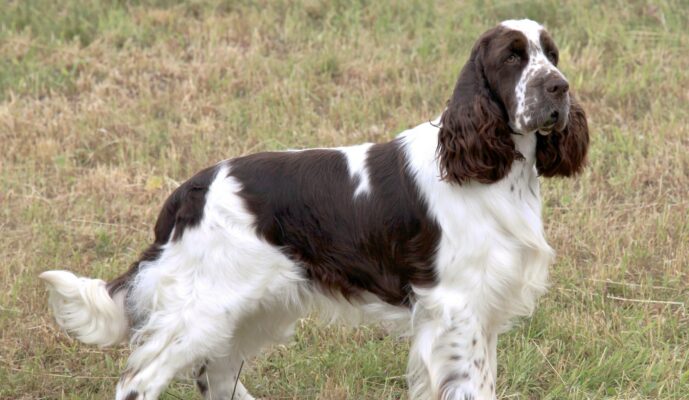
The English Springer Spaniel is a true and loyal human friend. They can combine two completely different roles: a venturesome helper on the hunt and an affectionate family pet. The character of English Springer Spaniel is obedient and malleable. Very attached to the owner and family members.
Table of Contents
Breed Information
| Another Name | Springer Spaniel |
| Origin | United Kingdom |
| Height | Males 50-51 cm Females 49-50 cm |
| Weight | 22.5 kg |
| Fur | Medium |
| Color | White with coffee or black spots |
| Lifespan | 12-14 years |
| FCI Classification | Retrievers – Flushing Dogs – Water Dogs |
| Group | Hunting dogs |
| Price | From $500 |
Breed Photos
Origin History
Images of spaniels could often be found in the works of art of the 17th century. For quite a long period, spaniels were not divided into different breeds at all. Until the XIX century, the spaniel was a universal and unified breed of hunting dog. According to the opinions of researchers, spaniels appeared in Europe thanks to the Roman legions. The English Springer Spaniel was bred in Norfolk County. It is not known for certain who insisted on breeding the new type of spaniel.
The English Springer Spaniel adopted all the working qualities and appearance from its cousin, the Field Spaniel. The only difference was considered to be that the English Springer Spaniel is not able to make a stand. The breed’s main advantage is the quick reaction to the hunter’s shot and the ability to bring a big game, not just birds.
In 1903, the English Springer Spaniel was recognized by the English Kennel Club as a separate independent breed. After World War II, the breed was at the peak of popularity among experienced hunters and large families. The breed received its standard and official recognition by the Fédération Cynologique Internationale in 1954.
Appearance
The English Springer Spaniel is a compact, harmoniously built dog, considered the fastest and tallest of all British spaniels. Its height at withers should not exceed 51 cm, and its normal weight is 22.5 kg. His movements are light, and his gait is free and confident.
The physique is strong and of moderate length. The head is medium, the transition from forehead to muzzle is smooth and rounded. The muzzle is almost equal in length to the cranial part, somewhat square. The eyes are oval, small, and always dark in color. Lighter eye color is considered an aberration. The ears are set at eye level, floppy, long, and adjacent to the cheekbones. Strong neck. Limbs with well-developed musculature. The tail is mobile, set low, and should not be kept above the back level.
The coat is of medium length, straight and thick. It can form a “wave”, but not too much curl. On the ears, limbs, and body, hair is always longer. Allowed colors: white with coffee or black spots. Also, any color may be accompanied by tan, going to a more reddish hue.
Character
The English Springer Spaniel is a true and loyal human friend. They can combine two completely different roles: a venturesome helper on the hunt and an affectionate family pet. The character of English Springer Spaniel is obedient and malleable. Very attached to the owner and family members. Not aggressive and does not suit as a guard dog, as by nature, he is very kind even to strangers. The English Springer Spaniel’s playful disposition allows him to get along well with children of all ages.
It is also not characterized by conflict with other animals. Hunting instinct can take over only to small rodents and birds. Needs long active walks and moderate physical activity. He loves to frolic in the water so that he won’t refuse an active holiday at the pond with the owner in summer.
Care
Keeping an English Springer Spaniel won’t be too much trouble. However, if you want to see a beautiful and healthy dog around, you must take regular care. Pay particular attention to your dog’s fur. It should be combed out every few days. Due to its “waviness,” it is prone to the formation of tangles. Seasonal haircuts are also welcome to make it easier to care for the coat.
It is recommended that you bathe your pet when it gets dirty, usually every four months. The English Springer Spaniel’s ears, due to their structure and length, can be susceptible to infections. It is important to prevent the accumulation of moisture and dirt. Wipe the ears with a special solution three times a week, then be sure to wipe them dry. Claws usually sharpen on their own; if this is not enough, trim them every month.
Training
English Springer Spaniels have an excellent memory, developed intelligence, and a desire to please and delight their owner. Owners and breeders note the breed’s good tendency to be trained. However, remember that the education of the pet, in any case, can not be abandoned. And you need to start training as early as possible – from three months of the puppy’s life. For the English Springer Spaniel, the attention of the owner is important. He is gentle, energetic, and not inclined to be capricious. It requires a calm attitude without cruelty.
Common Diseases
Most English Springer Spaniels are not predisposed to serious diseases, have good health and good immunity. But there is still a risk of developing some diseases, including hereditary ones:
- fucosidosis and phosphofructokinase deficiency (rare inherited metabolic diseases);
- allergic reactions;
- ophthalmological diseases (glaucoma, retinal atrophy);
- otitis media;
- epilepsy.
Nutrition
Veterinarians and breed owners are increasingly noticing some capriciousness in the Springer Spaniel’s food choices. At a young age, pets are quite picky about food. It is also not easy to choose food because the breed tends to have allergic reactions. Feeding should always be balanced, regular, and appropriate to the pet’s lifestyle. It is best to choose a hypoallergenic food for medium active dog breeds.
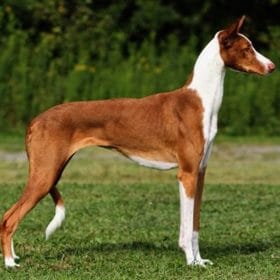 Smooth Collie
Smooth Collie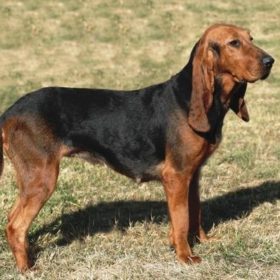 Bruno Jura Hound
Bruno Jura Hound Halden Hound
Halden Hound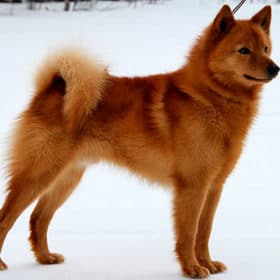 Finnish Spitz
Finnish Spitz Havanese
Havanese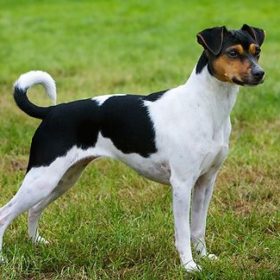 Brazilian Terrier
Brazilian Terrier